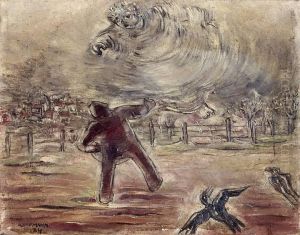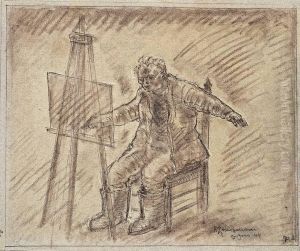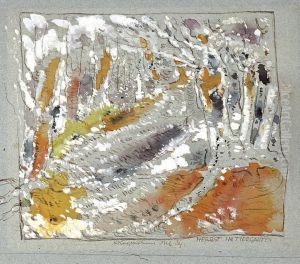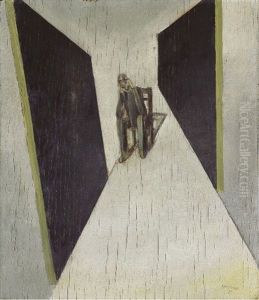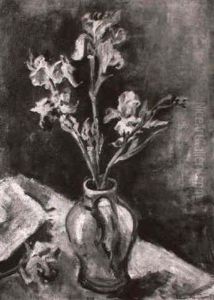Walter Kampmann Paintings
Walter Kampmann was a German artist known for his distinct contributions to the art world, particularly in painting and printmaking. Born on July 9, 1898, in Bonn, Germany, his artistic journey began in an era marked by significant upheavals and transformations, not just in the socio-political landscape but also in the realm of art. The early 20th century was a period of experimentation and innovation, and Kampmann's works reflected this spirit of exploration and the influence of various art movements of his time, including Expressionism and New Objectivity.
Kampmann's educational background in art started at the Kunstakademie Düsseldorf (Düsseldorf Art Academy), where he honed his skills and developed his unique style. His early works were characterized by a vibrant use of color and dynamic compositions, often exploring themes of human emotion, nature, and the changing society around him. He had a particular talent for capturing the essence of his subjects, whether in his hauntingly introspective portraits or in his vivid landscapes and cityscapes, showing a keen observation of light and shadow.
Throughout his career, Walter Kampmann was not just confined to painting; he also excelled in printmaking, a medium through which he could experiment with line, form, and texture in innovative ways. His prints often carried a stark, dramatic quality, employing bold contrasts and a deep understanding of the medium's potential to convey complex emotional and narrative depth.
Despite living through two World Wars, Kampmann's art did not delve deeply into the horrors of war as prominently as some of his contemporaries. Instead, he focused on the resilience of the human spirit and the beauty of the natural world, perhaps as a counterbalance to the chaos and destruction that surrounded him. After World War II, his work evolved, reflecting the changes in his personal outlook and in the artistic trends of the post-war period. He became more involved in exploring abstract elements, yet his work always retained a connection to the natural and human worlds.
Walter Kampmann's contributions to art were recognized in his lifetime, and he was a respected figure in the German art community. However, like many artists of his generation, his fame did not reach the global prominence of some of his contemporaries. He continued to work and exhibit his art until his later years, leaving behind a legacy that is appreciated for its depth, technical skill, and emotional resonance.
Kampmann passed away in 1984, leaving a rich body of work that continues to be studied and admired for its unique blend of realism and abstraction, its emotional depth, and its exquisite handling of color and form. His life and work offer a fascinating insight into the world of early to mid-20th-century European art, reflecting the tumultuous yet vibrant era in which he lived.
